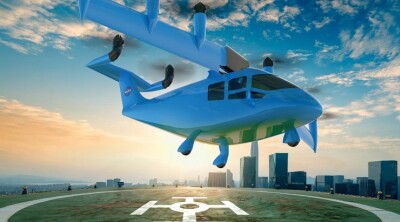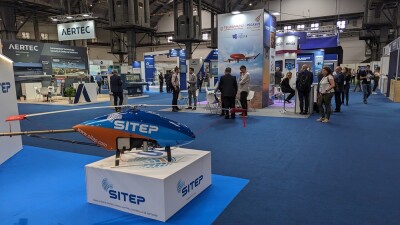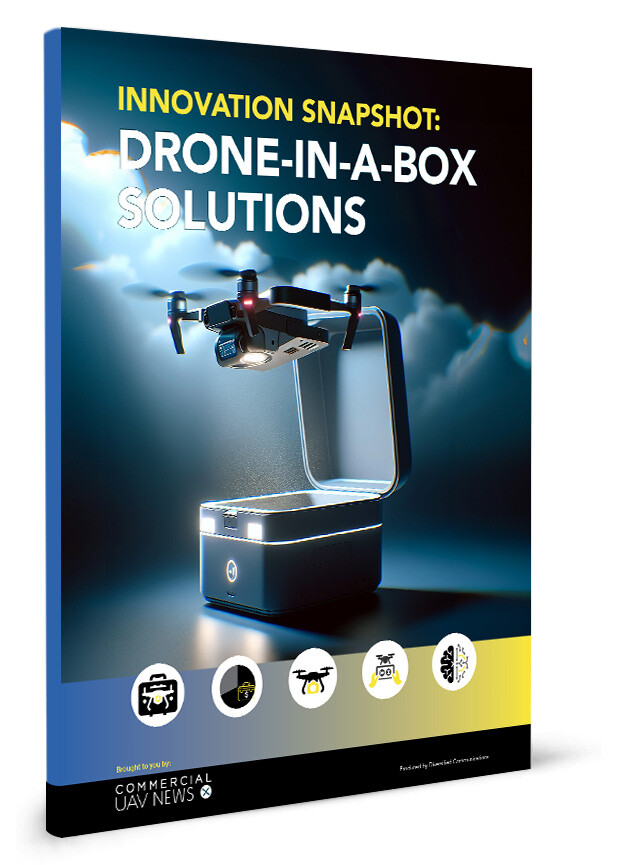Driven mostly by small companies, Spain’s drone market has shown potential with a growing number of businesses taking advantage of the opportunities to use drones in various contexts. A great percentage (39%) of Spain’s drone market consists of DSPs, followed by Drone Training & Education companies (14%), Hardware Manufacturers (8%), Engineering & Integration (8%), and more.
According to DRONEII, drone companies in Spain are slightly more optimistic than the global average (6.76 vs 6.6) regarding the Spanish drone market’s growth in 2024. As part of our UAVs Across Europe series, this article will explore how drones are being used across Spain.
Improving beaches’ protection
When people are struggling and drowning in the water, lifeguards must react as quickly as possible since a delay of seconds could be the difference between life and death. However, swimming to a person is difficult and requires other lifeguards on land to direct the ones in the water. Motorboats and jet skis are faster but costlier alternatives. To tackle these issues, CEO Adrián Agudo and Product Manager Enrique Campos founded General Drones in 2015.
In 2022, 22 beaches across Spain already used GD’s technology during roughly 40 to 50 lifesaving incidents. Outfitted with a high-resolution camera and two folded life vests that inflate upon touching water, GD’s drones can reach speeds of 50 mph and monitor roughly 3.5 miles of shore. In the same year, one of these drones saved the life of a 14-year-old boy as he struggled against a powerful tide off a beach in Valencia.
"When we arrived what we saw was a kid that was in very bad shape, with almost no energy to keep floating, so I sent over the life vest," Miguel Angel Pedrero, a General Drones’ drone pilot, said. "Because of the heavy waves, it was a complicated maneuver, but we finally managed to give him the vest and he could float until the lifeguards reached him by jet ski."
In late 2023, the Valencia City Council launched a new pilot experience to use drones in surveillance and rescue on three beaches, Malva-rosa, Cabanyal, and El Perellonet. As a complement service to the one provided by the Red Cross for rescue and lifeguarding, drones will carry a life jacket as a first safety resource when notified of a possible incident.
Inspecting and mapping penstocks
As pressure vessels in the form of a channel or pipe that carry water down from a water reservoir directly into the turbines in a power station, penstocks are widely used to produce clean energy in the hydropower industry. Penstocks require regular inspections to ensure the good condition of the inner surface and prevent potential damages that occur over the years due to continuous friction with high-pressure water.
To inspect these hillside-built structures, including hard-to-reach interior locations, one of the most adopted solutions is professional climber teams. However, this is a slow, time-consuming, and risky process as it includes descending through the penstock cavity and working in a confined space, in total darkness, with teams of 2 or 3 people. That’s why Spain-based Hovering Solutions, a designer and manufacturer of autonomous aerial robots for underground and GNSS-denied environments, developed a new generation of flying robots that fly autonomously through the interior of vertical or inclined pipes such as the penstocks.
According to the company, using these drones reduces the time needed for a regular inspection from days to only a few hours, decreases the costs by 50%, requires only 1 person to do the job, and removes most of the risks it involves.
Reshaping agriculture with drones
ICAERUS, an EU-funded program, aims to explore drone-based opportunities and provide a more complete and interconnected account of their potential and impacts as multi-purpose vehicles in EU agriculture, forestry, and rural areas. Serving as one of five primary ICAERUS use cases, Noumena, a Spanish technology company specialized in the study and analysis of spatial dynamics, is developing a crop monitoring and vineyard disease detection research project.
Aware of the urgent challenges faced by the agricultural sector, including the need for sustainable and technologically advanced solutions, Noumena is using refining and optimizing drone-based crop monitoring systems to create a
more resilient and productive future for farmers and the global food supply chain. Since 2022, the company has been in the city of Tarragona, Spain, assessing drones as tools for 3D canopy reconstruction in vineyards, by using aerial and ground image acquisition.
With the ICAERUS program planned to end in 2026, Noumena has developed a systematic methodology to consistently achieve high-quality results. This includes a comprehensive analysis of vineyard landscape characteristics; strategic deployment of weather stations for precise environmental monitoring; real-time reconnaissance flights; optimized data collection with drone camera system; advanced algorithmic solutions for addressing plant detection, plant stress, and disease identification; formulation of plant treatment strategies based on extracted conclusions; and practical implementation of drones through local farmers collaboration.
Improving tunnel construction safety
To increase the competitiveness of European companies in the construction sector, the EU-funded BEEYONDERS project aims to address the challenges the sector is facing by producing, commercializing, and integrating new and improved solutions into real construction scenarios. To address these challenges, such as labor shortage, lack of digital skills in some countries, and lack of motivation on the part of young people to work in the sector, to name a few, the project plans on taking advantage of automated machinery, remote and/or autonomous robots, real-time construction site mapping with drones and collaborative robots and smart systems.
To demonstrate the use of the technologies developed by BEEYONDERS, there will be 6 construction pilot scenarios in multiple infrastructure typologies across different countries. One of the scenarios will be held in León, Spain, at the Santa Barbara Foundation Test Tunnel, to explore how autonomous ground and air robotic solutions can help during tunnel construction.
Traditional tunnel construction methods require explosives and a jumbo to drill the excavation front. After the blasting is done and before workers can enter the tunnel, air extraction systems need to clean the atmosphere, which is full of dust. This is unproductive due to the downtime caused by the extraction process, which takes about an hour to complete. BEEYONDERS expects to reduce downtimes and improve safety by using autonomous drones to enter the tunnel immediately after the explosion. They will gather information about the tunnel conditions and help guide other drones to remove explosion debris from the excavation front before human workers can enter.
Want more insights on UAVs Across Europe?
Commercial UAV Expo Europe will bring the commercial UAS ecosystem together in Amsterdam 8-10 April 2025. The event will serve as the pivotal platform for commercial drone professionals across Europe to explore, connect, and innovate within the rapidly evolving world of UAS. Learn more and save the date.















Comments